Mark Camoccio reveals the rather interesting Spectra 4-16 x 50i scope from GPO; priced at £560 it's a great value scope for your air rifle
A lifetime around the shooting sports has seen plenty of kit come and go along the way, yet one piece of hardware that I’ll probably be buried with is my trusty old Zeiss 3-9x36 Diavari-C. Build quality is literally as good as it gets, and it’s simply dependable. That old classic gave me a taste for quality, and the old adage of ‘you get what you pay for’, is true up to a point, where shooting optics are concerned.
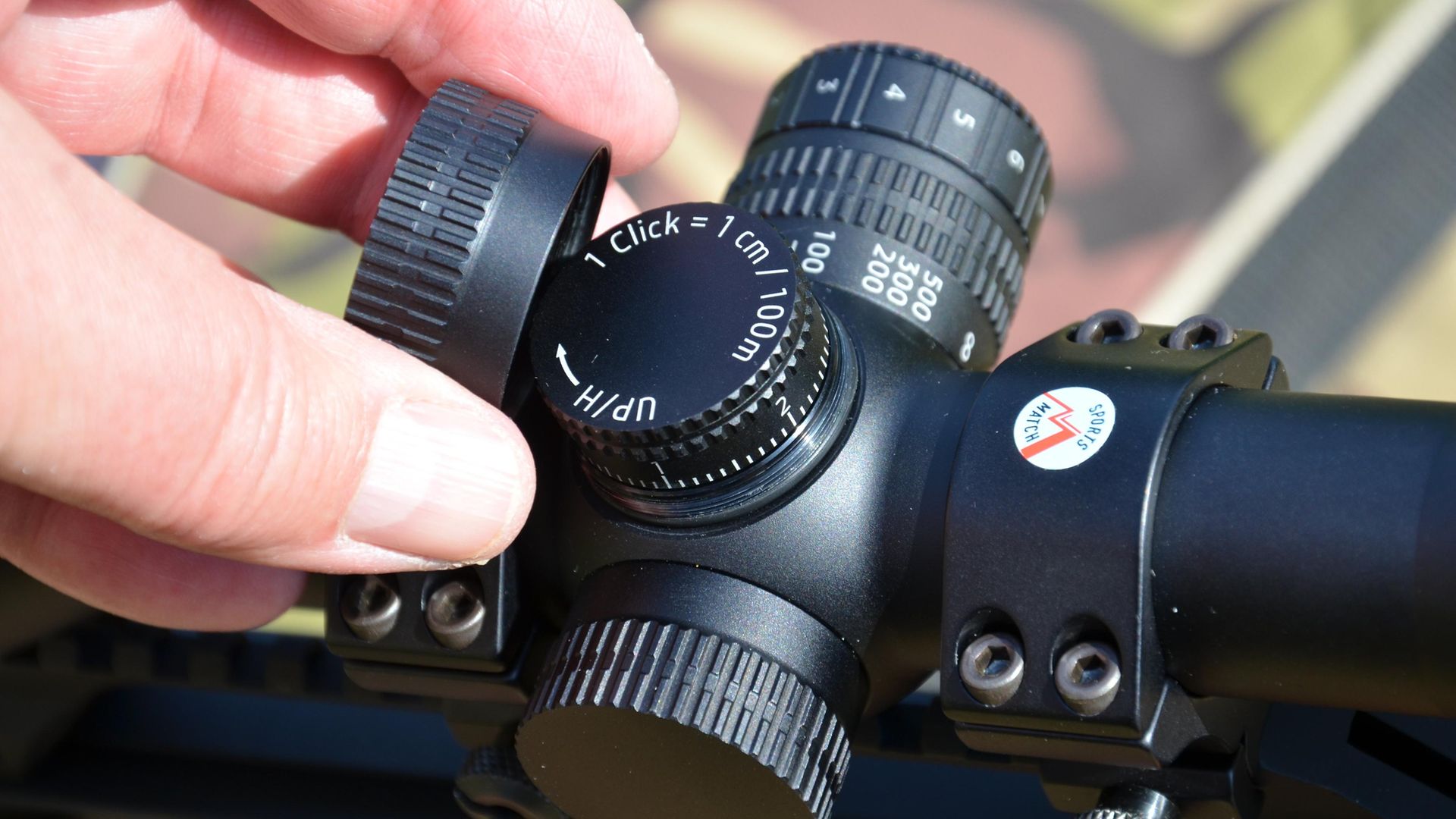 credit: Mark Camoccio
credit: Mark Camoccio
German Precision Optics
On test here is one of the models from the German Precision Optics range – the GPO Spectra 4-16 x 50i, and given that I wasn’t even aware of the brand until a few months back, it’s been something of an enlightening experience. Designed and engineered in Germany, these scopes come slickly presented; alongside the scope, comes a comprehensive instruction booklet, a technical specification booklet, microfibre lens cloth, and elasticated lens covers.
The Spectra’s 30mm body tube is constructed from black anodised aluminium, and with a whopping 50mm objective lens, and high-grade lenses, light gathering is the name of the game. Tradition meets high-tech with GPO, and state-of-the-art elements are incorporated into the manufacturing process. They certainly talk a good game, and the official blurb states ‘optical lenses, fully multi-coated with GPO Bright Lens coating technology, along with Double HD objective lens technology’. Sounds encouraging? Let’s take a look.
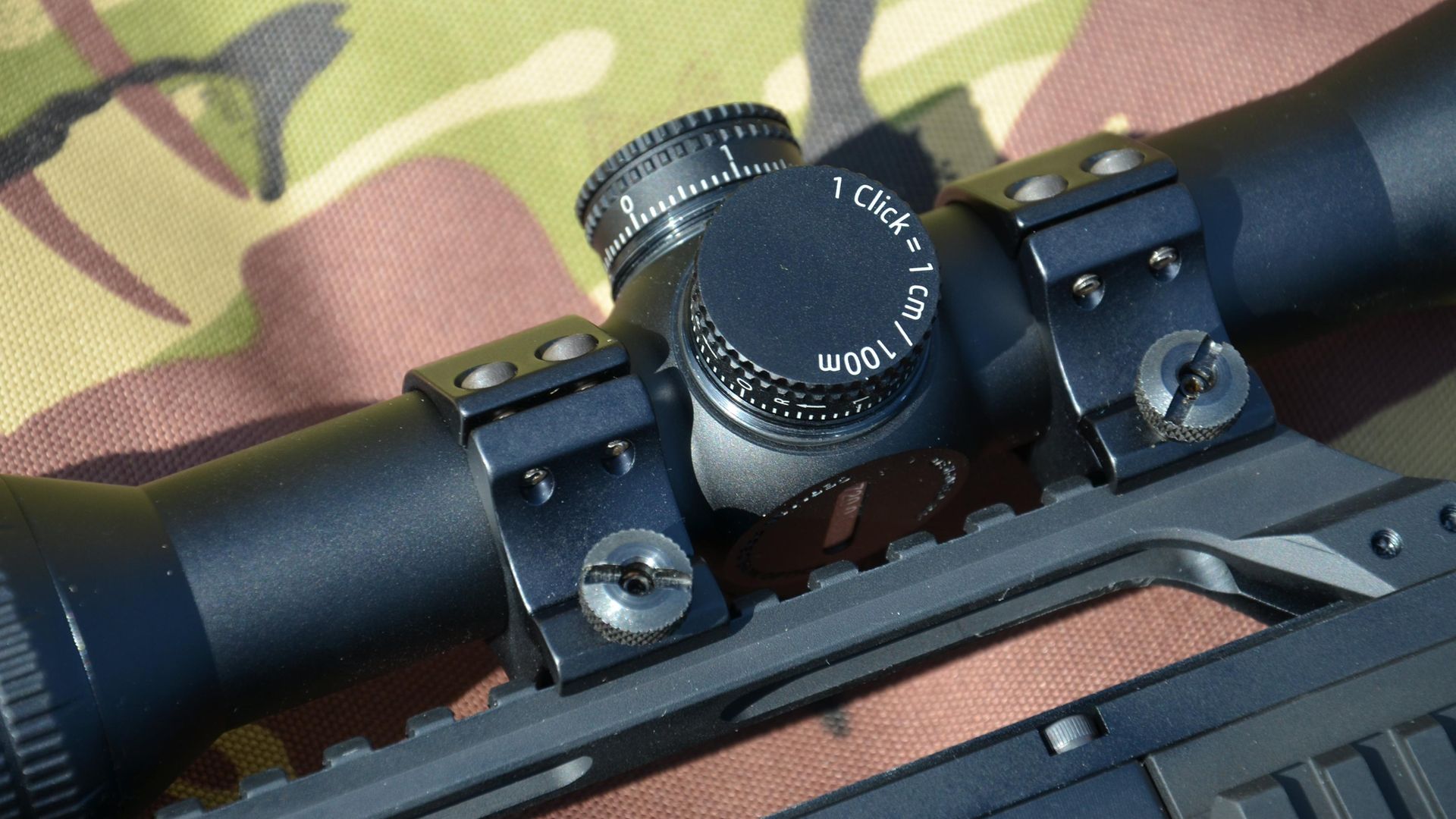 credit: Mark Camoccio
credit: Mark Camoccio
Setting up the GPO Spectra scope
With the Spectra all snugly clamped up in 30mm mounts, the first task concerns the rubber-protected, rear-mounted, fast-focus ocular dioptre, and this may need initial adjustment to bring the reticle and target in focus together. Helpful markings refine the job, too. Now to get zeroed. Turrets here are of the low-profile design, with neat aluminium screw caps to blank off the adjusters once all is set. The profile overall, though, is wide, given that massive left side turret. The rheostat and battery chamber are housed on the tip, whilst the inner dial controls parallax. Parallax adjustment is satisfyingly smooth, and minimum distance here is 15m. Markings on the dial are then 20, 30, 50, 75, 100, 200, 300, 500 up to infinity.
Under the metal caps, the turrets are clearly marked with click values of 0.1mrad (.36inch at 100 yards). At this point, it’s worth mentioning an observation, that the turrets move in the opposite direction to normal. Logic dictates that if you screw down the elevation, point of impact should move down. Likewise, dial windage clockwise, and you’re moving POI to the left. Well, the reverse movement is the case here. Counter-intuitive for sure, but hardly a deal breaker. Moving on, and both turrets can be set to ‘0’ once adjustment is complete, which is always handy. Just unscrew the cap, lift and twist to ‘0’, then re-tighten. Turret adjustments and tracking all functioned on test perfectly, for the record.
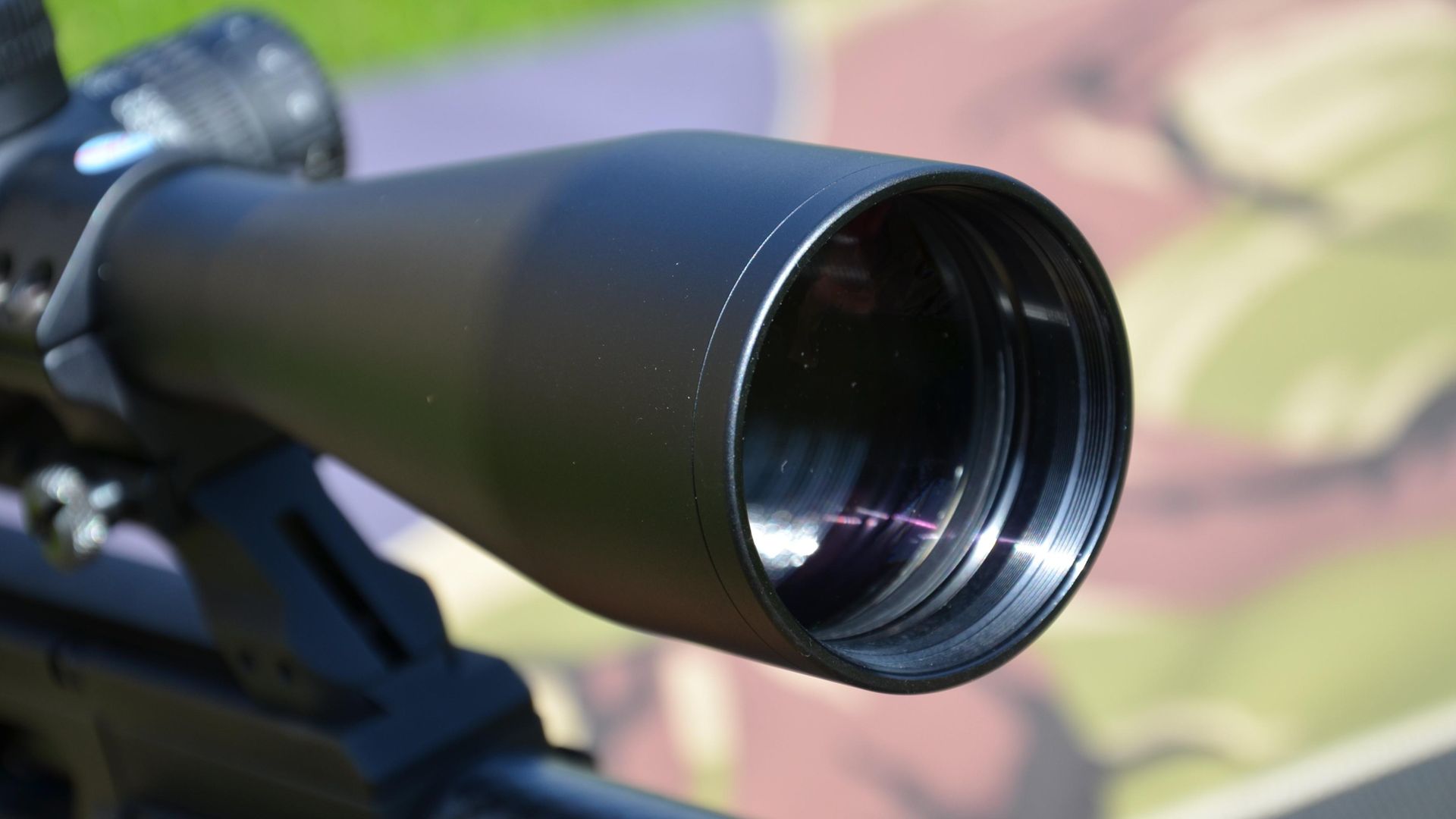 credit: Mark Camoccio
credit: Mark Camoccio
GPO Spectra recticle
A choice of reticle exists with these scopes, and my model came fitted with the G4i version, which, given my previously mentioned long association with Zeiss, looks refreshingly familiar, German in style and uncluttered.
There’s equidistant inner left, right and lower lines, bracketed by equidistant outer thick posts, left right and down. Bold it may be, but a few more reference points would be welcome. That said, specify this model with the G4i drop reticle, and those graduations are there. Superior glass always shows, and image quality here with the HD set-up, is impressive.
Fancy illumination to guide the way, then that’s factored in, too, with what GPO term ‘iControl Illumination’, which here, takes the form of a central illuminated red dot – particularly fine. It will be too subtle for some, and to give an idea, the dot isn’t even visible when not illuminated. Power up the rheostat, and there’s smooth progression through 8 stages of brightness. All importantly, this auto powers off after 3 hours, and there’s even a low-battery indicator, which shows the dot blinking, to indicate remaining power is down to 15%. One CR2032 disc-style battery powers the system and is stored inside the cap of the left turret. On test, the battery cap proved super-tight to shift, but I might have been unlucky, or someone ham-fisted could have got there first!
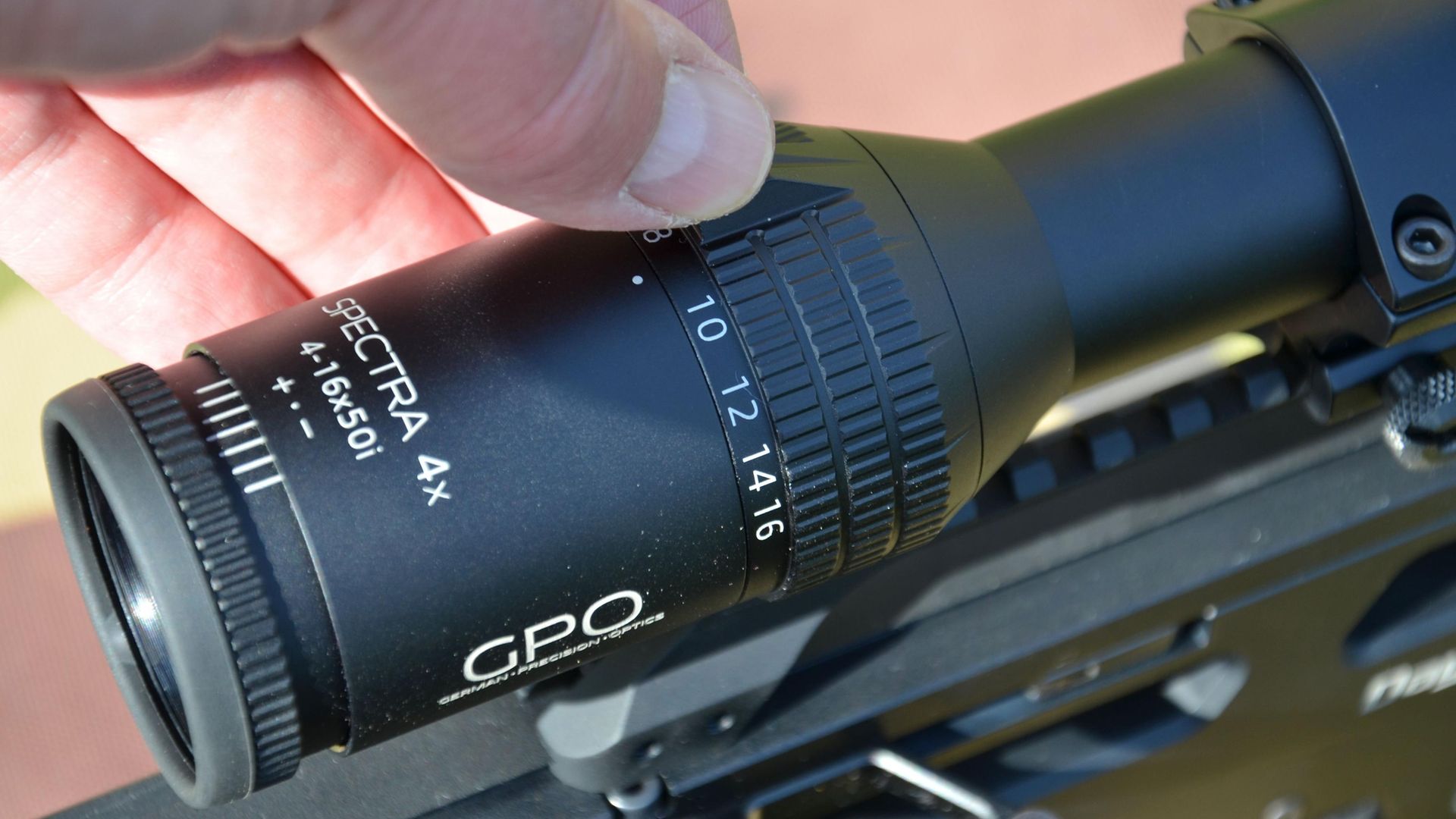 credit: Mark Camoccio
credit: Mark Camoccio
Field testing the GPO Spectra scope
There’s an impressively wide field of view, but dialling up to that highly useful 16x magnification brings versatility when more detail is needed, made all the easier, given the neat, raised control bar on the mag’ collar. Shooting over an extended session, and whilst assessing the side parallax function, it suddenly dawned on me that for a change, factory marked distances on the left dial did actually correspond with reality.
However, I’ve come round to thinking that any live hunting trips I undertake these days are best backed up with a hand-held, laser rangefinder – closing the margin for error, and maximising the chance of a perfectly placed shot. So, that’s the approach recommended here. Range zap a few reference points around the shoot in advance, and use the scope’s parallax dial to dial out parallax error at the specific shot distance.
So nothing ground-breaking here, but it’s the superior air that really spearheads the features list. Super robust, wonderful clarity, edge-to-edge sharpness, and a level of refinement that’s guaranteed to instil confidence.
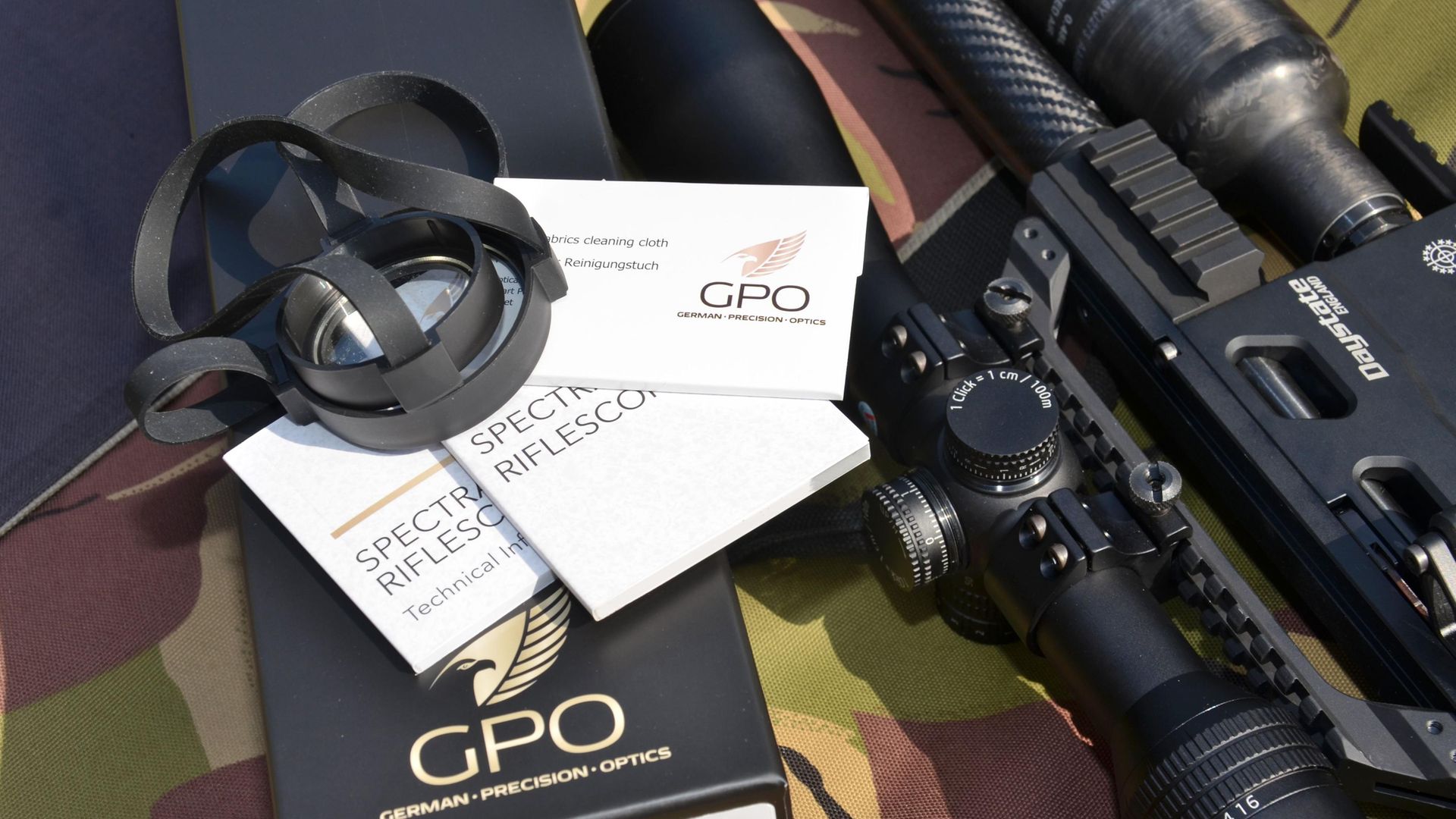 credit: Mark Camoccio
credit: Mark Camoccio
Technical Specification
Model: GPO Spectra 4-16x50i
Manufacturer: German Precision Optics (GPO)
Country of Origin: Germany
Magnification: Variable 4x-16x
Objective Lens Diameter: 50mm
Reticle: G4i or d
Illumination: Yes, via CR2032 battery
Linear Field of View: 10.4m-2.6m @100m
Weight: 22.4oz
Eye Relief: 3.74”
Click Values: 1cm @100m
Body Tube: 30mm
Minimum Focus: 10m
Length: 14.75”
Turret Type: Screw cap, finger twistable
Clicks Per Rotation: 60 on both turrets
Number of Turret Revolut.: 4 on elevation/ 4.2 on windage
Price: £560 including elasticated lens caps
Contact: Raytrade UK Ltd